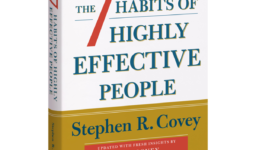1. Systems vs Goals
- Focus on the overall system rather than just a single goal (though goals are still necessary).
- Ensure you have a good system to achieve your goals.
- Make 1% improvements each day – this can lead to a 37% improvement over time.
- Mastery is the process of narrowing focus to a tiny element. Once that area becomes a habit, it becomes a new building block for further progress.
- The way to improve is to never stop making improvements.
2. Identity-Based Habits
- Be the type of person you want to become, rather than just focusing on outcomes.
- Identity statement: “I’m the type of person who is disciplined, reliable, and great on a team.”
- Humans are herd animals – most people want to build habits that make them fit in.
- We imitate the habits of:
- Family and friends
- The tribe
- Those with status & prestige
3. Habit Formation & Execution
- Plan to carry out the habit: “I will do [habit] at [time] and [location].”
- Habit stacking: Attach a new habit to an existing one.
- Make habits easier by reducing friction:
- Behaviours are easy if they are:
- Obvious
- Attractive
- Easy
- Satisfying
- Behaviours are difficult if they are:
- Invisible
- Unattractive
- Hard
- Unsatisfying
- Behaviours are easy if they are:
4. Environment & Cues
- Reduce exposure to negative cues.
- Change environments to support good habits.
- Use technology to automate habits and reduce effort.
5. Dopamine & Motivation
- Dopamine drives behaviour:
- The first time, dopamine spikes after the reward.
- The second time, dopamine spikes at the craving/anticipation stage.
- When we expect a reward, the dopamine hit is not as strong.
- Desire is the engine that drives action.
- Do something enjoyable before doing a difficult task.
- If wants outpace likes, you’ll always feel unsatisfied.
6. Repetition & Consistency
- It’s not about how long it takes to build a habit, but how many repetitions it takes.
- Never miss twice – if you fail once, get back on track immediately.
- The first rule of compounding: never interrupt it unnecessarily.
7. Boredom & Sustained Success
- The greatest threat to success is not failure, but boredom.
- The more you practice something, the more boring and routine it becomes.
- Once we fit in, we start looking for ways to stand out.
8. The Role of Emotions & Suffering
- Desire prompts behaviour.
- Emotions drive behaviour.
- Suffering drives progress.
- How we feel influences how we act, and how we act influences how we feel.
- When feelings are impaired, decision-making suffers.
9. Efficiency & Simplicity
- Addition by subtraction – achieve more with less effort.
- Make habits satisfying to reinforce them.
Four Laws of Behaviour Change
- Cue: Make it obvious.
- Craving: Make it attractive.
- Response: Make it easy.
- Reward: Make it satisfying.
Applying Atomic Habits For Business:
Make it obvious: Clear and repeated CTAs.If it’s not obvious it’s forgotten.
Make it attractive: Think about the consumers prediction of your business/product. Benefits & personalisation.Frame people who dont use your solution in a negative light – statistics.
Make it Easy: Remove friction from every step the consumer could take.
“Business is a never-ending quest to deliver the same result in an easier fashion.” The idea is to make every phase of the process as convenient as possible.
Make it satisfying: Immediate rewards, satisfaction, praise, encouragement, pleasure. Also don’t over promise or over sell a guarantee.
Applying Atomic Habits For Parenting
Make it obvious: clear layout
Make it attractive: sports clubs, private schools, environments where personality and behaviours are healthy
Make it Easy: Good, quiet, clean, productive environment.
Make it satisfying: Praise the good, ignore the bad. Allowance system.



